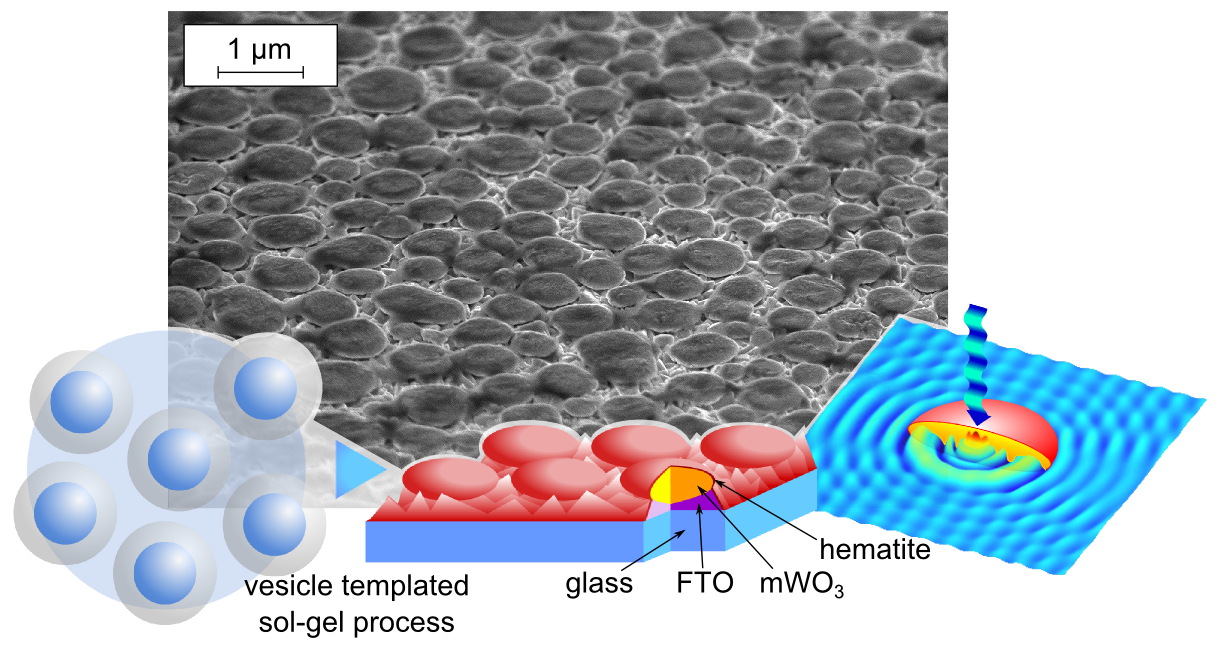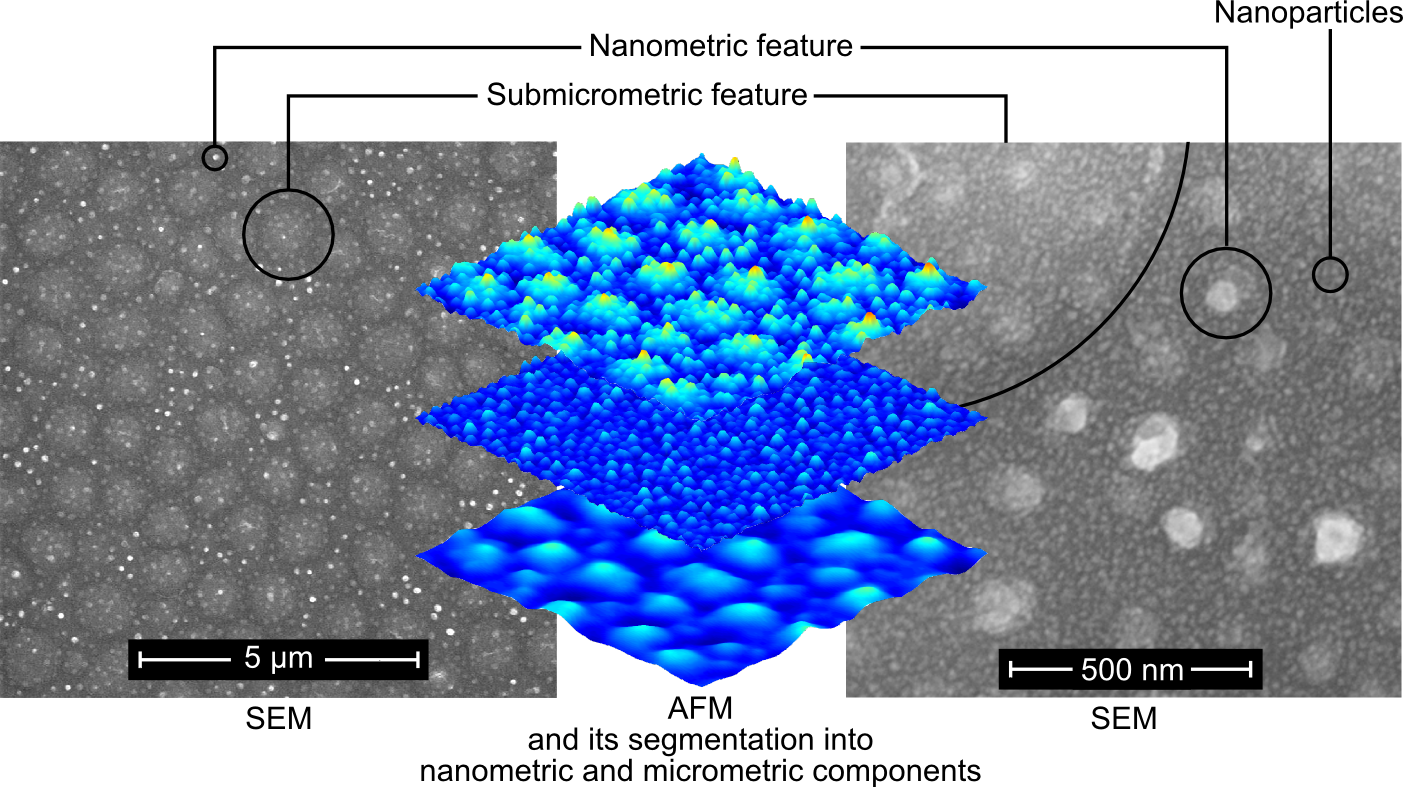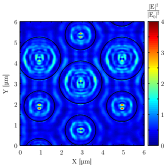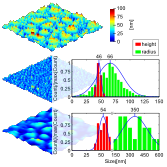

Metal oxides such as hematite (αFe
The aim of this project is to study original photoelectrode films, with a controlled structure grown using bottom-up approaches. Inexpensive self-organization processes are implemented to build architectures with characteristic sizes in the nanometric to micrometric range. At these length scales photonic light management can increase the light path length inside the photoactive materials.
Implementing a heterojunction between a tungsten oxide thin film (thickness around 300 nm) and a hematite ultra-thin film (thickness around 5 nm) in a photoanode proved to be a successful strategy to observe significant water splitting under simulated solar light. The depletion layer at the interface between mWO
Nevertheless for a good charge separation this design relies on thin oxide films. The films thinness, coupled to the transparency of metal oxides, leads to poor light absorption. In our article: Photonic light trapping in self-organized all-oxide microspheroids impacts photoelectrochemical water splitting
(Energy and Environmental Science,
Authors version)
we present a bottom-up approach to implement this kind of heterojunction into microspheroids and we explain how light is trapped by this architecture and increases the film photoactivity. This structure is self-organized, emerging from a vesicle-templated sol-gel process. Polymer vesicles self-assemble in an aqueous solution containing a soluble tungsten precursor. Upon spin coating of this solution a self-organized monolayer of tungsten sol droplets embed in a polymer matrix is formed. When this film is pyrolysed mWO

You can observe in this video that light is deviated from normal incidence and trapped inside the microspheroid (resonant modes) while part of this trapped light is re-emitted outside the spheroid and can be caught again by neighboring spheroids (near-field scattering). In our article (Energy and Environmental Science, Authors version) we showed that these light trapping effects increases the film photoactivity compared to flat films and we investigated how the spheroids sizes impacts the film photonics and photoactivity.
We also investigated an alternative self-organization method: electrohydrodynamic lithography (EHD). A polymer/iron salt thin film is produced by spin coating of an aqueous solution on a silicon wafer. This film is submitted to a potential difference while facing a nanostructured counter electrode. Using this method, hematite films with a hierarchical structure were obtained:

This complex structure is composed of micrometric oblate droplets (0.5-1 μm) covered with nanometric oblate droplets (100-200 nm), the overall film being composed of nanoparticles (20-30 nm). This work constituted our first successful implementation of a complex electrode architecture involving a functional photoelectrode material, hematite.
For more information you can consult our article: Hematite nanostructuring using electrohydrodynamic destabilization (Applied Surface Science, Authors version).

